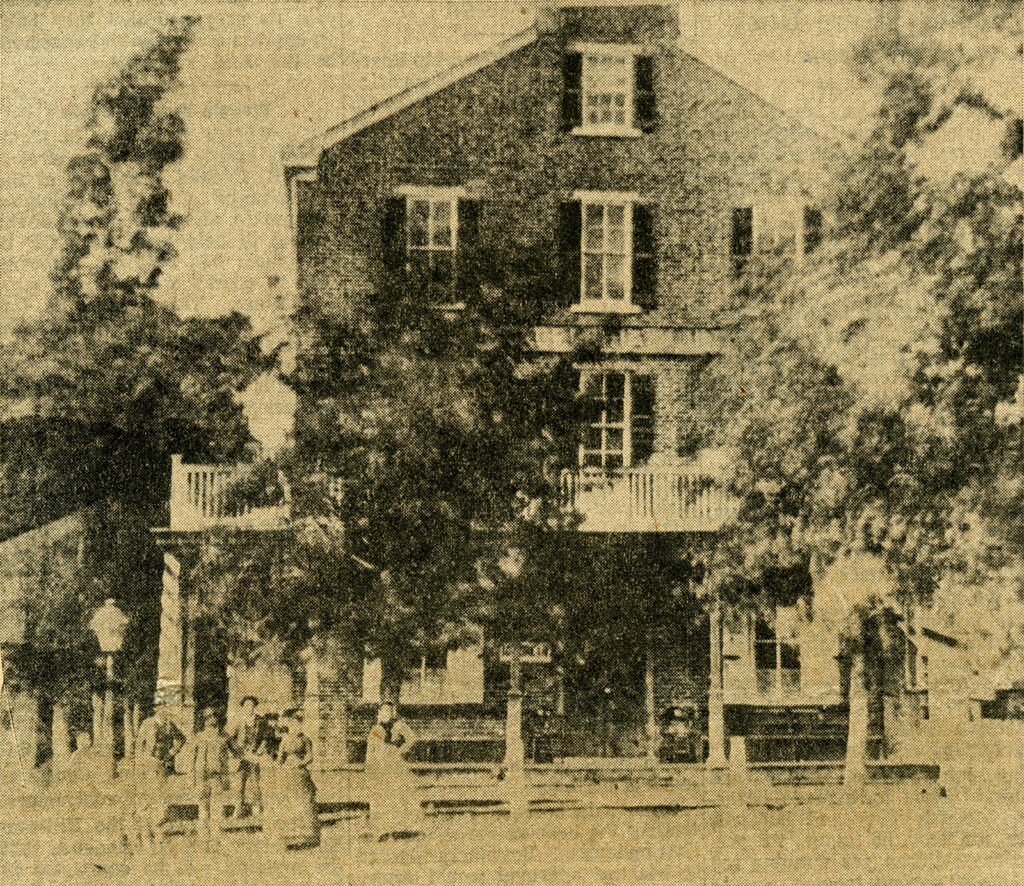Not everyone agreed that North Wales should be incorporated as a borough. This next article describes the actions taken by the opponents of the borough’s incorporation in 1869.
Inasmuch as the village of North Wales was in 1869 a part of Gwynedd township, and by the incorporation the township would lose the territory that was sought to be incorporated, certain citizens of Gwynedd township filed a Remonstrance on April 14, 1869, protesting against the proposed incorporation of the Borough of North Wales.

About one month later, May 17, 1869, the following withdrawal of certain persons as petitioners for the corporation was filed with the court:
“The undersigned inhabitants and citizens of the Village of North Wales who signed a petition for the incorporation of the Village of North Wales into a borough, respectfully beg leave to withdraw their names and to place themselves into opposition to said charter for the following reasons:
1st. That the said corporation would be injurious to the people living and owning property there.
2nd. That it would entail great expense and be of no benefit to the people.
3rd. That it includes a large portion of farming territory.
“We therefore ask the court to reject said application. Peter Stover, Enos Kulp, Henry Bury, John Manns, Frederick Moll.
“We, the undersigned inhabitants and residents of North Wales, who have signed neither the petition for or against the incorporation of said borough, do hereby unite with the within named persons in remonstrating against the incorporation of said village into a borough. David Richard, Jacob M. Weber; Joseph Stover, H. B. Null, Thomas J. Speakman, Charles Manly , Charles G. Eaton, Joseph H. Kriebel, Philip H. Wagner, John Wagoner, Joseph S. Quinn and Leidy Baker.”
The court then directed that the case be heard on depositions.
In compliance with the ruling of the court, George N. Corson, representing the petitioners, and Charles Hunsicker, for the Remonstrants, met the witnesses at Abel Lukens’ Hall (later known as the Rorer Seems Building) on June 19, 1869, and proceeded to take testimony.
The first pro-borough witness to be heard was Elias K. Freed, who testified that up to that time he had lived in North Wales for twelve years and that he was in the milling business, steam, grist and flour mill. That the population of North Wales was 450 and that the amount of business done in the village was about $450,000 per year. He also stated that the population was increasing and that there were then being constructed some fifteen or sixteen houses. Mr. Freed further testified that, from the travel to and from North Wales and the business done at the depot, and other business, and that the number of people coming here from abroad, he considered the proper police regulations and laying out of streets, and prosperity of the times, required that the village should be incorporated into a borough.
Among the other witnesses who testified were Abel K. Shearer. Henry F. Moyer and Isaac G. Freed. Each gave their particular reasons for desiring the incorporation.
On the same days the testimony of the remonstrants [opposing the creation of the borough] was heard. The first witness called for the remonstrants was Jacob Shearer, grandfather of Abel K. Shearer, who later conducted the lumber yard on Second street. Mr. Shearer stated that he was a farmer and had resided in the town for thirty years and that in his opinion the village was not yet large enough to be incorporated.
Daniel Kenderdine was next heard, as was Enos Lukens, Abel Lukens and Jacob H. Kneedler, all of whom gave their reasons for opposing the incorporation.
The depositions were filed in court on June 21, 1869, and after due consideration, the court granted the charter for the incorporation into a borough on August 20, 1869, with the following order:
“And now to wit: August 20, 1869, the court confirms the judgment of the Grand Jury, and decrees that the said town Of North Wales be incorporated into a borough in conformity with the prayer of the petitioners. That the corporate style and title thereof shall be ‘The Borough of North Wales’, That the boundaries thereof shall be as set forth in said petition for incorporation and that the annual borough election shall be held at the public house of Abel Lukens in said borough in accordance with and subject to all the provisions of a separate election and school district.
“The court further decrees and fixes the first election in said borough for election of officers provided for by law at the said public house of Abel Lukens, on the 21st day of September 1869, between the hours of 8 o’clock a. m. and 6. o’clock p. m. of said day, and designates Abel K. Shearer to give due notice of said election, and the manner thereof. And the court further decrees that Augustus W. Dettra be judge and I. W. Wampole and George Young the inspectors of said election.”
This post is sourced from a column entitled Early North Wales: Its History and Its People penned by long-time North Wales resident historian Leon T. Lewis. The article appeared in its original form in the August 4, 1959 issue of the North Penn Reporter.
